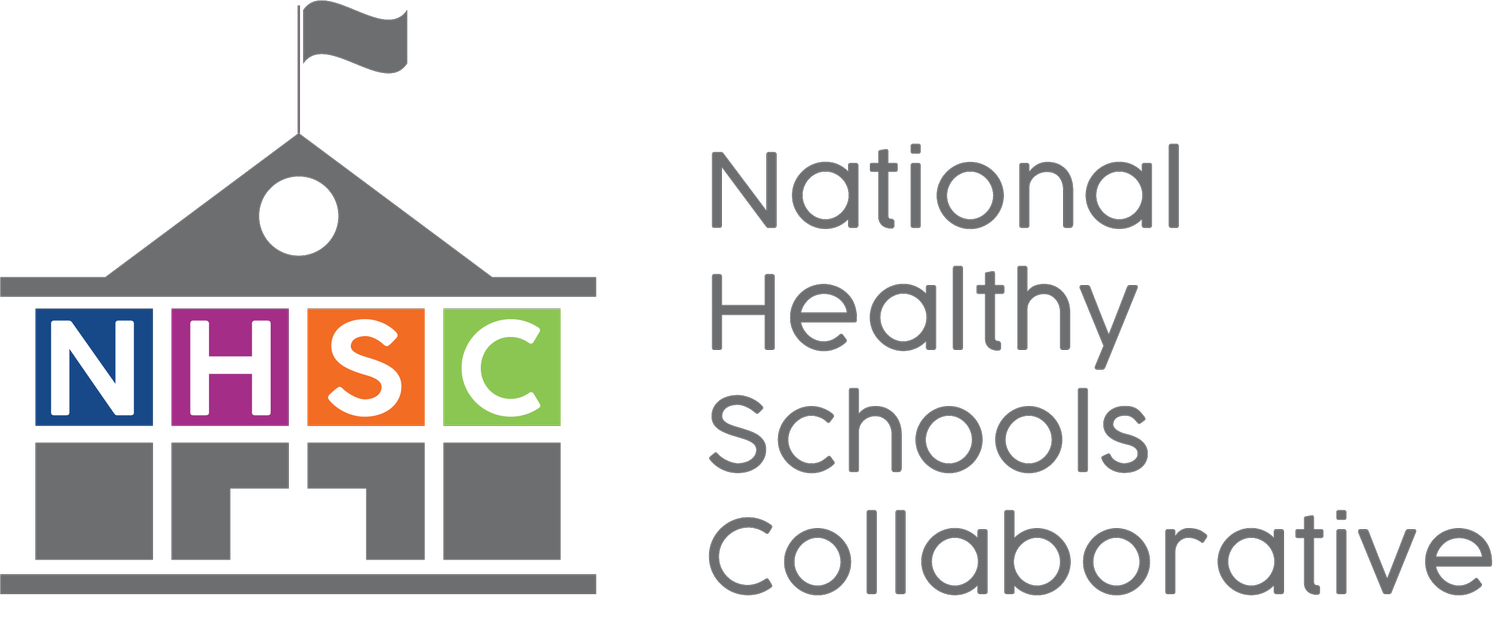
District & School
Priorities, Opportunities, and Case Studies
-
Opportunities
Create a new position or designate responsibility at the district level for coordinating and monitoring the multi-office management of healthy schools’ policies and funding streams across the district.
Start a School Health Advisory Committee with members who are representative of the community and are tasked with providing recommendations about healthy schools to the board of education. In addition, ensure that health practitioners are represented on district- and school-level decision-making structures, such as steering committees and coordination of service teams.
Create a Medical Advisor position, where possible, to advise the school board on meeting the health care needs of students.
Create a line item called, “Healthy Schools Investments” that is focused on the whole child (the WSCC components or state-level whole child frameworks may be a good starting point ), and assign a budget.
Engage, expand, and/or create educator-workforce mechanisms to promote health, wellness, and safety, including through collective bargaining (where that takes place, and even where it doesn’t) through initiatives like labor-management health care committees and health and safety committees. Identify and incorporate, as appropriate, existing occupational health and safety training programs from governmental, union, and other sources.
Integrate student health data safely (with attention given to privacy and security) into school-level educational needs assessments for targeted-assistance schools, schools identified for comprehensive support and improvement, and for school-wide programs, as required under Title I of the Every Student Succeeds Act.
Build the capacity of schools to deeply engage students, staff, families, and community members in needs assessments, emphasizing both qualitative and quantitative data relating to health and wellness.
Case Study
In Virginia, Fairfax County Public Schools (FCPS) established a School Health Advisory Committee (SHAC) charged with providing recommendations on student health and healthy schools to the school board. Established into law by Virginia Code §22.1-275.1, “the advisory board [assists] with the development of health policy in the school division and the evaluation of the status of school health, health education, the school environment, and health services.” For the 2021-2022 year, the FCPS SHAC is focused on promoting mental health for staff, students, and caregivers. The FCPS SHAC is publicizing and sharing best practices through webinars and podcasts, with the goal of engaging the FCPS community on health and wellbeing issues.
-
Opportunities
Direct funding towards research-based programs and activities that support sustainable healthy schools, including sufficient staffing.
Advocate for strong nutritional and mealtime policies and resources.
Case Study
In Georgia, Atlanta Public Schools (APS) is using a mix of funds provided through the Atlanta Public Schools general fund and federal pandemic relief bills to expand their comprehensive health services offerings through their public schools. Over the last two years, the APS Health Services Program has grown from a staff of one to ten and includes a full time epidemiologist, registered nurses, school health coordinator, and COVID-19 case investigators. By working with school nurses at the individual schools, the program is able to deliver a coordinated, team approach that addresses a number of individual and public health issues that can affect learning. Although much of the immediate focus was on pandemic related issues, the health services offerings have expanded to address a wide range of student health needs.
-
Opportunities
Create data-sharing partnerships and guidance on Memorandums of Understanding with community-based primary care providers, referring providers, and school nurses to provide secure electronic access to select portions of their patient’s medical records (e.g., NemoursLink).
Establish or strengthen systems to maximize Medicaid administrative claims.
Case Study
In Washington, D.C. local public schools are engaged in a telehealth program in partnership with Children’s National Hospital. Students who visit a school nurse are connected through secure videoconferencing technology to a board-certified physician who can manage both acute and chronic conditions., including conditions that can significantly impact child learning such as diabetes or asthma. Additionally, physicians can issue anticipatory health guidance, provide health education and screening, and lead family meetings where necessary. Through the program, children are able to receive quicker access to care, diagnosis, and management thereby leading to faster recovery without the need to wait for services at a hospital or urgent care center.
-
Opportunities
Work with educators, administrators, and their unions to develop and implement healthy school training programs, and incorporate, as appropriate, existing approaches to training from OSHA, NIOSH, NIEHS, and others.
Provide adequate funding for schools to create and maintain space for physical activity and play; provide community access to green space on school campuses and adequate funding to schools for community use of this space (e.g., additional overhead expenses associated with additional use and extended operational hours of the spaces).
Develop flexible capital planning frameworks that can be updated based on changing inputs (e.g., technology and student needs).
Incorporate the values and vision for adequate and equitable school facilities and grounds into the school district’s mission, vision, and strategic plans.
Establish a standing infection prevention and control program in partnership with unions and employee representatives to ensure workforce implications are understood and addressed.
-
Opportunities
Maximize the ability of schools to bill Medicaid for school health services.
Collaborate with local government agencies to align funding (e.g., agencies overseeing public health, water, parks, and transportation).
Establish partnerships to leverage funding streams from other sectors to support healthy schools.
Provide funding for Student Health Advisory Committees.
-
Opportunities
Create a local public awareness campaign focused on the bidirectional influence of health and learning outcomes.
Work with educators, administrators, and their unions to develop and provide comprehensive professional learning opportunities focused on the interdependence of education and learning and focused on alignment with WSCC model categories.
Work with educators, administrators, and their unions to develop model accountability measures for student health and learning outcomes in coordination within existing state accountability systems.
Work with educators to develop and implement health literacy curriculum content.
-
Opportunities
Coordinate with Student Health Advisory Committees and representatives of the community to determine what student-level data is most important to the community (the WSCC model categories may be a good starting point), what data is currently measured, and what the constraints are to accessing data that is currently unavailable.
Establish local data-sharing agreements that support partnerships between education, health care, and public health to better identify student health needs, and target resources and supports accordingly (e.g., D.C. data sharing agreement).
Case Study
The Cincinnati Department of Public Health, Federally Qualified Health Centers, Cincinnati Children’s Hospital, and the Health Foundation of Greater Cincinnati partnered to found Growing Well, an independent nonprofit organization that connects students and families with school-based health services. While most health services provided through Growing Well supported school-based health centers (SBHC) are kept separate from academic data,school nurses and health aides who provide services through these SBHCs, have access to PowerSchool where information about health issues can be linked to academic data at the individual level. The value of this linked data has included comparisons of health outcomes by schools to target needs and identify resources, develop immunization compliance records, and identify incomplete student health records for targeted follow up. Since its founding, Growing Well has expanded to service six counties in Ohio and three more in Kentucky with concomitant growth in SBHCs in each of these areas.
-
Opportunities
Through collective bargaining or, where that does not take place, through other labor-management engagement, provide pay and comprehensive benefits to attract, recruit, and retain a healthy school workforce.
Implement a comprehensive educator wellness model inclusive of policy, procedures, practices, and data-informed decision-making.
Offer high-quality professional learning opportunities and training to educators and healthy schools personnel focused on the whole child, and that address self-care, secondary traumatic stress, compassion fatigue, and burnout prevention.
Refine staffing models and functional responsibilities within schools, in partnership with unions, to enable healthy school personnel to work within their expertise and strengths and ensure that there is sufficient staff and licensed professionals free to perform and are appropriately compensated, commensurate with other medical professionals in the proximate geographic area, for the most value-added functions.
Provide all educators with materials, resources, and training to support their self-care and wellness, including completing wellness and burnout assessments.
Hold professional development events focused on staff wellness and healthy school climates.
Engage with staff to find opportunities to promote and practice wellness and self-care. Include the development of health-related curricula focused on both individuals' health and occupational and environmental health and safety.
Conduct regular input collection measures (e.g., focus groups, online surveys) to learn about the school’s climate and staff’s workplace satisfaction to inform the development of school improvement efforts.
-
Opportunities
Ensure communications offer detailed, actionable information and specific guidance for supporting their child’s education and health in multiple languages and modalities.
Ensure all local family communities are represented in decision making.
Build the knowledge of educators and develop school-wide and individual processes for engaging families in their child’s education.
Collaborate with educators and families to co-create a resource hub for families that shares information on important policies and procedures across health and learning that is accessible to all families.
Offer professional learning opportunities and create a culture that builds the capacity of educators to understand and effectively partner with youth.
Prioritize inclusion of student voice and build the capacity of students to be actively engaged in school decision-making around health and learning.
Communicate district goals and progress on health and learning outcomes with families.
Ensure the alignment and integration of district wellness and family engagement policies.
Include diverse family representatives in the SHACs.
Ensure family input is included in operating budget development.
Identify opportunities for, and promote the establishment and deepening of community schools.
Case Study
In New Mexico, the Albuquerque Family Engagement Collaborative is the resulting embodiment of Albuquerque Public Schools (APS) Board of Education’s goal to, “meaningfully engage families and enhance partnerships with the community to maximize student achievement.” The Collaborative, “is composed of multiple departments and a representative from the New Mexico PTA [that] meets regularly, working together to design and implement programs and projects to help meet the district goals for family engagement.” Through a process that includes sharing what each department is doing for family engagement, determining ways to to work more collaboratively on family engagement, determining how to move the “dial” for more positive family engagement in APS, and identifying how family engagement activities are linked to learning, the Collaborative is actively linking the greater education ecosystem to student health and learning outcomes.
-
Opportunities
Co-advocate with local districts and schools about programs and strategies that improve health and learning outcomes.
Map community assets to identify potential partners, allies, and resources.
Convene community providers regularly to review student-related health and learning outcomes, share resources, and build relationships.

